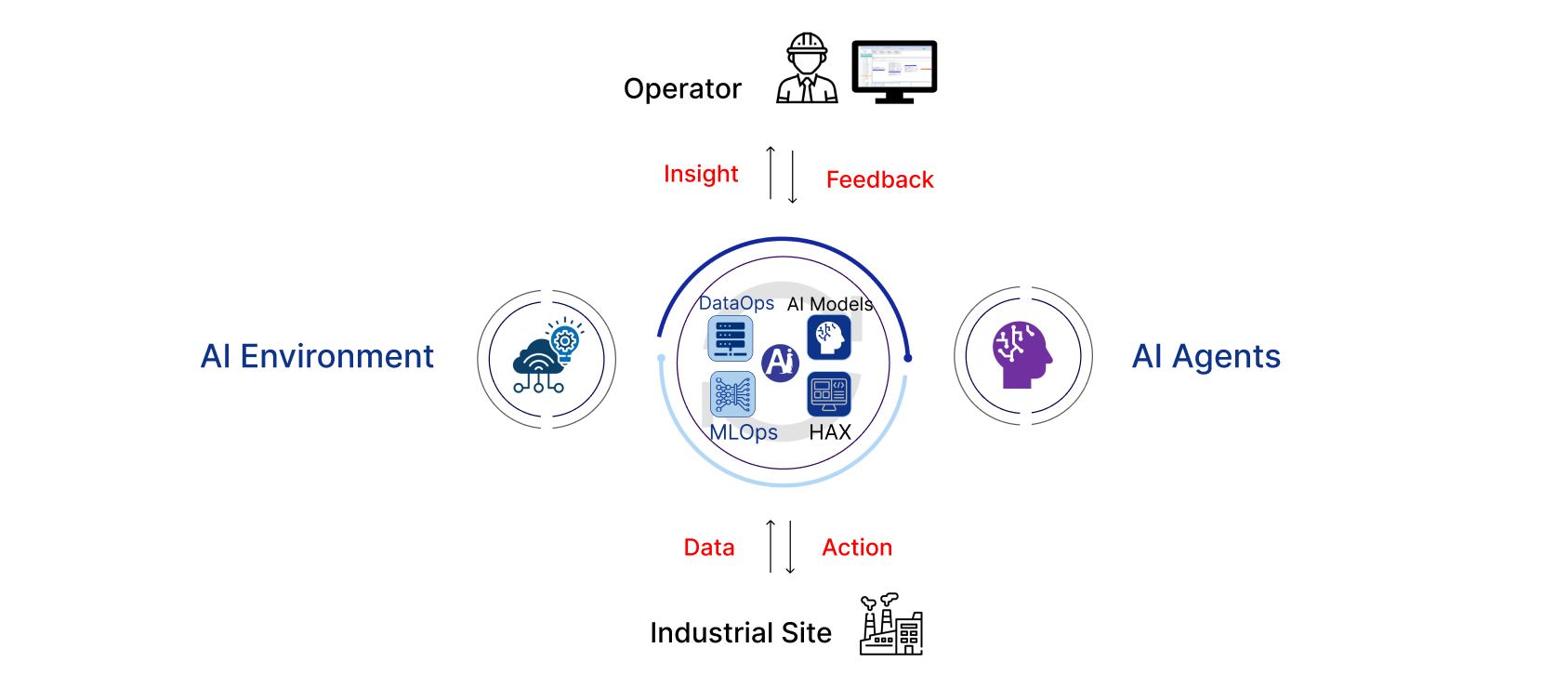Industrial AI Ecosystem
Beyond Models, Building AI Ecosystems
WHAT IS THE INDUSTRIAL AI ECOSYSTEM?
Approaching AI as an Ecosystem
The Industrial AI Ecosystem is a comprehensive framework that recognizes AI success requires more than just algorithms.
Effective AI systems need interconnected components working together to create sustainable value.

CORE COMPONENTS
Infrastructure, Platform, and Software
The AI Ecosystem unites two core components:
the AI Environment and AI Agents.
Together, they create a comprehensive system that collects, processes, analyzes, and acts on industrial data.

Fount

Industrial
DataOps
Nest

MLOps
Platform
AI Environment
Platform and Infrastructure to Fuel AI Initiatives
- Data Foundations
Build strong data pipelines to collect, process, and organize large amounts of data effectively
- AI Infrastructure
Deploy, monitor, maintain AI models to ensure consistent performance and adaptability
- Connect AI to
the Real-World
Enable smooth integration of data pipelines and AI decision-making with existing industrial system workflows

Avian

Analyze & Discover
Sentinel

Monitor & Predict
Apex

Control & Optimize
AI Agents
Software Equipped with AI for Real-World Action
- Decision-Centric
AI Modeling
Choose the right AI Agent – whether for analysis, monitoring, or optimization – to match your specific use case and objectives
- Feedback Loop
Personalize and improve your AI models with expert feedback and interaction
- AI Workflow Integration
Deploy AI capabilities into existing workflows and systems without disrupting operations
CORE BUILDING BLOCKS
Key Technologies

Human-AI Interaction
The interface through which humans communicate and collaborate with AI.
Well-designed interfaces enable users to utilize specialized tools to optimize their workflow and make the most of AI-driven insights.
Decision-Centric AI Models
Specialized AI architectures that process information and generate insights for specific objectives.
AI acts much like the system’s brain, with each model purpose-built for specific operational contexts and decision-making objectives.
MLOps
The infrastructure that maintains AI performance and adapts to changing conditions.
MLOps acts much like the immune system for AI – constantly monitoring and dealing with new threats and ensuring AI models remain effective even as operational environments change.
DataOps
The foundation that gathers and transmits information throughout the organization.
DataOps technologies are composed of hardware and software that captures, cleans, and channels data to where it can be processed effectively.
